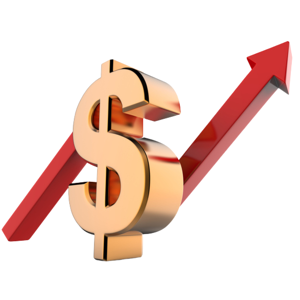Tavex uses cookies to ensure website functionality and improve your user experience. Collecting data from cookies helps us provide the best experience for you, keeps your account secure and allows us to personalise advert content. You can find out more in our cookie policy.
Please select what cookies you allow us to use
Cookies are small files of letters and digits downloaded and saved on your computer or another device (for instance, a mobile phone, a tablet) and saved in your browser while you visit a website. They can be used to track the pages you visit on the website, save the information you enter or remember your preferences such as language settings as long as you’re browsing the website.
| Cookie name | Cookie description | Cookie duration |
|---|---|---|
| tavex_cookie_consent | Stores cookie consent options selected | 60 weeks |
| tavex_customer | Tavex customer ID | 30 days |
| wp-wpml_current_language | Stores selected language | 1 day |
| AWSALB | AWS ALB sticky session cookie | 6 days |
| AWSALBCORS | AWS ALB sticky session cookie | 6 days |
| NO_CACHE | Used to disable page caching | 1 day |
| PHPSESSID | Identifier for PHP session | Session |
| latest_news | Helps to keep notifications relevant by storing the latest news shown | 29 days |
| latest_news_flash | Helps to keep notifications relevant by storing the latest news shown | 29 days |
| tavex_recently_viewed_products | List of recently viewed products | 1 day |
| tavex_compare_amount | Number of items in product comparison view | 1 day |
| Cookie name | Cookie description | Cookie duration |
|---|---|---|
| chart-widget-tab-*-*-* | Remembers last chart options (i.e currency, time period, etc) | 29 days |
| archive_layout | Stores selected product layout on category pages | 1 day |
| Cookie name | Cookie description | Cookie duration |
|---|---|---|
| cartstack.com-* | Used for tracking abandoned shopping carts | 1 year |
| _omappvp | Used by OptinMonster for determining new vs. returning visitors. Expires in 11 years | 11 years |
| _omappvs | Used by OptinMonster for determining when a new visitor becomes a returning visitor | Session |
| om* | Used by OptinMonster to track interactions with campaigns | Persistent |
| Cookie name | Cookie description | Cookie duration |
|---|---|---|
| _ga | Used to distinguish users | 2 years |
| _gid | Used to distinguish users | 24 hours |
| _ga_* | Used to persist session state | 2 years |
| _gac_* | Contains campaign related information | 90 days |
| _gat_gtag_* | Used to throttle request rate | 1 minute |
| _fbc | Facebook advertisement cookie | 2 years |
| _fbp | Facebook cookie for distinguishing unique users | 2 years |

The price of gold has once again surged to unprecedented levels, with the current rate standing at $2,178.30 per troy ounce at the time of this writing.
This marks the highest level that gold prices have ever reached, surpassing the previous record by nearly $30. The last peak occurred on December 4, 2023, when gold prices climbed to $2,149 per troy ounce.
The rise in December was propelled by remarks from Jerome Powell, the Federal Reserve Chairman, concerning inflation expectations. The current surge, however, can be attributed to a variety of factors. Let’s explore what they are.
Jerome Powell Testifies Before The US Congress
Jerome Powell appeared before the United States Congress in a highly anticipated testimony. Unlike the significant boost in gold prices following Powell’s speech in December, this time, events seem to be unfolding in reverse order. In his testimony Wednesday, Federal Reserve Chair Jerome Powell continued to indicate that the fight against inflation is not over.
Powell stated that although he thinks interest rates should be lowered at some point this year, the Fed needs more assurance that inflation is heading in the direction of the institution’s long-term target of 2% before it will start to lower rates.
Powell stated:
I will say there’s no evidence or no reason to think that the US economy is in, or in some kind of, short-term risk of falling into a recession
The Economic Data is Not Positive
The recent economic indicators have not been particularly encouraging. Analysis of the data from the past two weeks reveals that the United States, along with other regions, is grappling with systemic challenges.
Despite initial impressions that the Federal Reserve’s measures are yielding positive outcomes – namely, preventing the US from slipping into an official recession. The drawbacks of such monetary policies of central banks in the financial market significantly surpass their advantages.
Persistent Inflation

Despite a three-year battle against inflation, it remains an unresolved issue in both the US and the Eurozone. The general perception of inflation is often based on the official rate, which is an average figure derived from the price movements of specific categories of goods and services not universally utilised.
For more insight, refer to: How Does Inflation Affect Gold Prices?
The Federal Reserve favours the Personal Consumption Expenditures (PCE) index as its inflation gauge. According to the Fed, this index offers a more accurate representation of the fluctuations in household expenses and the true effects of expansionary policies, such as inflation and excessive lending/borrowing money, especially during the 2020-2021 period.
In January 2024, the annual PCE (Personal Consumption Expenditures) inflation rate was recorded at 2.4%. This is 0.7 percentage points lower than the general annual inflation rate, which stood at 3.1% for the same timeframe.
Notably, both indicators saw a monthly increase raise in interest rates of 0.3% when comparing January 2024 to December 2023. These figures of interest rates rising indicate that the Federal Reserve has not achieved its objective of curbing inflation. This is irrespective of the index it selects to represent the escalation in consumer prices.
Interest Rates: Expectations vs. Reality

In our article “What Will Happen to the Price of Gold in 2024?”, we predicted that gold prices this year would benefit from a decline in U.S. interest rates. It was anticipated that there would be three rounds of interest rate reductions, each by 25 basis points.
In January 2024, there was a 70% likelihood that the Federal Reserve would lower interest rates in March of that year. However, according to the CME Group’s FedWatch tool, which assesses the chances of interest rates falling within a specific range, this probability has now plummeted to 3%.
Read more on the topic here: The Federal Reserve
This shift is due to the Federal Reserve’s evaluation of the U.S. economy as stable, despite the presence of historically high interest rates. As the economy continues to demonstrate strength amidst costly borrowing and limited access to market liquidity, the likelihood of an imminent rate cut is fading with each passing day.
The FedWatch tool now indicates that any potential reduction in higher interest rates is only anticipated to occur during the Federal Reserve’s decision on June 12, 2024.
Labor Market Insights
A key barometer of market health is the Job Openings and Labor Turnover Survey (JOLTS). This dataset encompasses the count of job openings, hires, voluntary departures, layoffs, dismissals, and retirements. A lower incidence of these JOLTS indicators signals a more stable labor market.
Expectations for the number of JOLTS in January 2024 are 8.9 million, down from 9.026 million in December 2023. It is important to note that the number of JOLTS is still higher than the values before the pandemic . However, the US unemployment rate is at a record low of 3.7%.
The only explanation is that people are no longer staying at work as long as before the pandemic. The main reason is layoffs, especially in industries that are becoming increasingly sensitive to the capabilities of artificial intelligence and robotics.
This week, the data on applications for unemployment benefits for the period 24th February – 2nd March will also be published. They are expected to remain unchanged compared to the period of 17th-23rd February and be around 215,000 . With them, we already have data similar to those from the period before the pandemic.
In light of the rising costs of these wages, the difficult access to credit and loans that are already very expensive for businesses, and the costs of production, it is not surprising that overall output is falling.
Economic Growth Vs Public Debt Dynamics

In the final quarter of 2023, the United States’ Gross Domestic Product (GDP) experienced a growth of $334.5 billion.
Concurrently, the national debt of the United States surged by $834 billion
It’s widely acknowledged that the United States has been substantially built on debt, a characteristic it shares with many other nations. However, the concern lies in the pace at which this debt is expanding – an acceleration that’s becoming increasingly evident.
Throughout 2023, the U.S. public debt escalated by $1.9 trillion, marking a 6.2% rise in rates from the level in 2022. In comparison, during the same timeframe, the country’s GDP increased by $1.54 trillion, or 5.8%. Presently, the national debt is escalating by $1 trillion every 100 days, underscoring a critical dynamic in the economy’s structural foundation.
As previously mentioned, the Federal Reserve’s characterisation of the economy as “stable” is likely to postpone any reductions in interest rates for an extended period.
In 2023, the interest expenses in the US budget soared to $1 trillion, solely for interest payments. Given that the country’s total GDP for 2023 amounted to $27.94 trillion, these interest expenses accounted for 3.57% of the GDP. With defense spending constituting 3.65% of GDP, the US faces a daunting dilemma: balancing the imperative to maintain low inflation against the risk of precipitating a recession through sovereign default.
Gold Prices Amid Global Economic Challenges

While our discussion has primarily centered on macroeconomic issues in the US, it’s important to note that most economies are facing challenges. Notably, countries once regarded as leading economic forces – such as Germany, the UK, and Japan – are experiencing recessions.
European nations are particularly struggling due to policies that are superficial in nature
These policies appear beneficial on the surface, seemingly aimed at assisting citizens. However, a closer examination reveals that their adverse impacts often surpass their benefits.
Such unrest contributes to periods of heightened insecurity, exacerbated by armed conflicts in regions like Ukraine and the Gaza Strip. During these times, the demand for safe-haven assets, such as gold and silver, tends to surge, reflecting significant price increases.
Consequently, gold prices have once again soared to unprecedented levels across most major international currencies, with the notable exception of the US dollar.
The recurrent peaks in gold prices prompt deeper inquiries into the magnitude of structural issues stemming from the practice of issuing currency not backed by tangible assets and from excessive lending practices.

















